- Administrator
- Albums and Singles
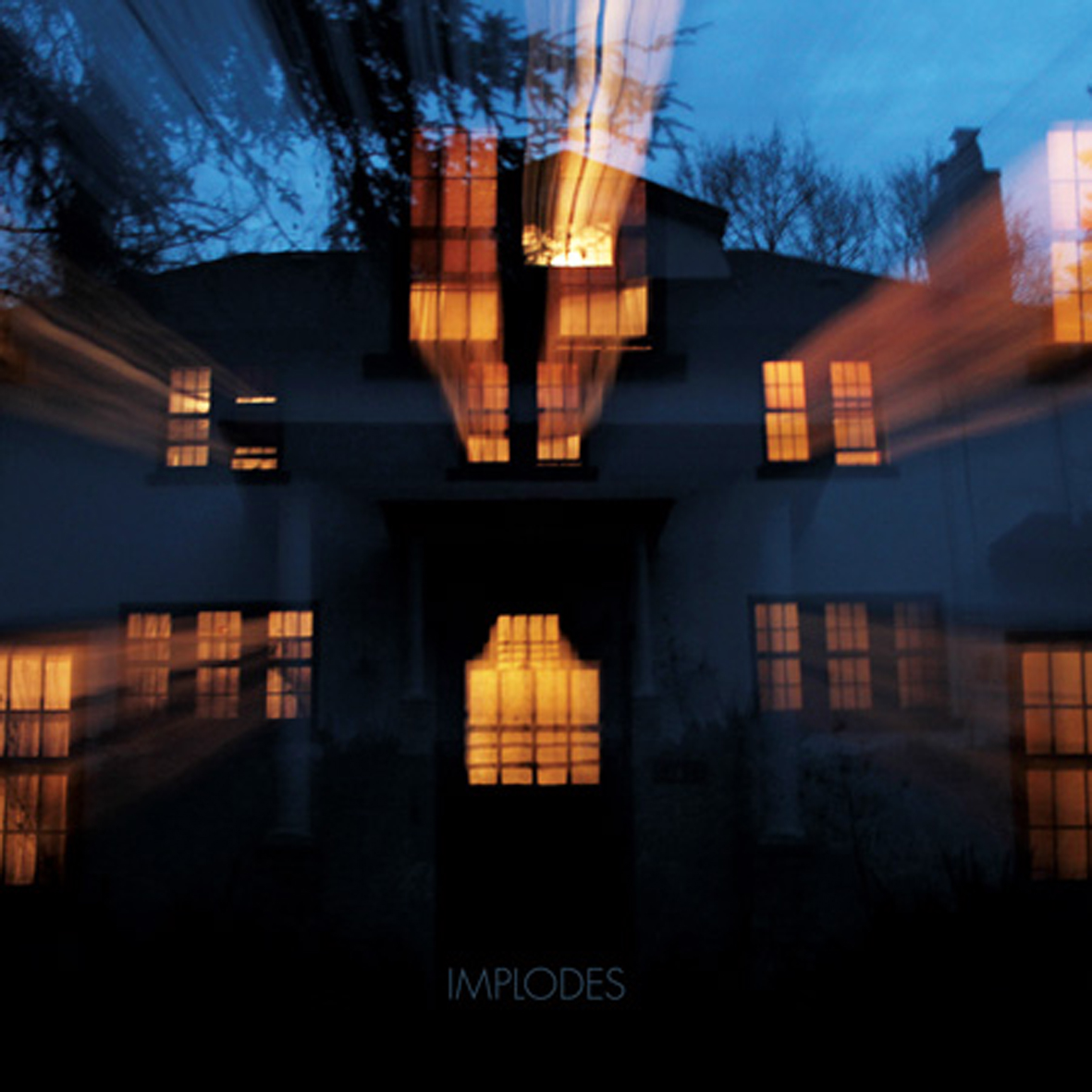 While it definitely boasted some of the year's best cover art (I am a sucker for shadowy figures wielding curved blades), Implode's 2011 Kranky debut (Black Earth) occupied a fairly unappealing niche for me, offering up a lot of bleak, slow-motion shoegaze with too much processing and too few hooks.  Two years later, Recurring Dream offers more great cover art and more brooding effects pedal abuse, but the band have definitely grown quite a bit better at what they do.  It is still a bit of a slog to make it through the entire album, but the handful of highlights are great enough to make it worth the effort.
While it definitely boasted some of the year's best cover art (I am a sucker for shadowy figures wielding curved blades), Implode's 2011 Kranky debut (Black Earth) occupied a fairly unappealing niche for me, offering up a lot of bleak, slow-motion shoegaze with too much processing and too few hooks.  Two years later, Recurring Dream offers more great cover art and more brooding effects pedal abuse, but the band have definitely grown quite a bit better at what they do.  It is still a bit of a slog to make it through the entire album, but the handful of highlights are great enough to make it worth the effort.
After deceptively opening with a brief bit of creepily Lynchian synth ambiance ("Wendy 2"), Implodes completely blindsided me with "Scattered in the Wind," which sounds as close to a hit single as this band will ever come.  All of the usual haze and sustain-heavy guitar soloing remain in place, as do Matt Jencik's  narcotized vocals, but it is greatly enlivened by a meaty bass riff and insistently pulsing guitarwork.  Also, the decision to double Jencik's vocals with bassist Emily Elhaj's gives the song a more compelling and distinctive dynamic than is usual.  Those seem like such a simple tweaks to the Implodes' sound, but they make such an enormous difference.  I am far more likely to put up with (or even enjoy) a band's indulgences if they are presented with at least one concretely gratifying thing to hold it all together (charisma, power, rhythm, a strong melody, whatever).  "Scattered in the Wind" boasts several such elements and totally kills as a result.
The quartet unexpectedly out-do themselves yet again two songs later with the hallucinatory synth ambiance of "Zombie Regrets," which (to my ears) is probably the best piece they have ever recorded.  For one, it is short enough that it does not overstay its welcome.  More significantly, however, its dreamy idyll is brilliantly disrupted by thick, vibrato-heavy swells of melody.  In a way, "Zombie Regrets" is a microcosm that illustrates everything that is both wrong and right with Implodes, as it works so beautifully for three reasons: 1.) it offers an unexpected twist on something relatively familiar, 2.) its various components are both strong and clear, and 3.) it has immediacy and physicality.
Missing the third part is often Implodes' fatal flaw, as their guitars are generally so heavily processed that they feel floating and detached.  That is fine if there is something else to provide a song's heft (ie- Elhaj's bassline in "Scattered in the Wind"), but that does not occur as frequently as it needs to.  Also, a lot of Implodes songs lack a strong central motif, which makes them feel more like delivery systems for cool guitar solos than actual memorable songs.  Granted, the quartet have a real knack for creating an appealingly heavy and/or drugged mood, but the songs quickly blur together when there are not clear hooks to make them stand-out.
Fortunately, Implodes' talent for the unexpected resurfaces in a few other pieces to dazzling effect.  For example, the crescendo of "Necronomics" sounds like a time-stretched A Place to Bury Strangers getting sucked into a black hole, while "Wouldn't You Know It" features some awesomely evil-sounding vibrato over the top of its dirge-y chord progression.  Touches like that proved to be the tipping point for me: I definitely like this band now.
Recurring Dream is not necessarily a great album, but its best moments make it clear that Implodes are no ordinary band.  Rather, they seem to be a band with extraordinary vision struggling with uncharted territory (shoegaze meets cosmic horror and the cold enormity of space?).  That is a tall order.  In fact, I would not have thought such a thing were possible or desirable before hearing this album.  For now, Implodes have only captured fleeting glimpses of that elusive vision, but those glimpses are glorious.
 
Read More
- Administrator
- Albums and Singles
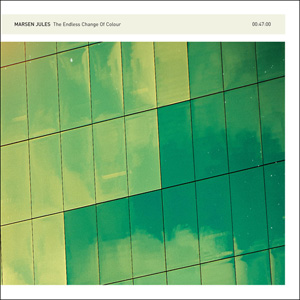 German artist Marsen Jules has been working in sparse, subtle worlds of ambient sound for over a decade, and this single song album follows that template. Living up to its title, throughout the 47 minutes there is a constant change of light and dark, hues and saturations that never stay still.
German artist Marsen Jules has been working in sparse, subtle worlds of ambient sound for over a decade, and this single song album follows that template. Living up to its title, throughout the 47 minutes there is a constant change of light and dark, hues and saturations that never stay still.
Based upon generative compositions sourced from a single phrase on an old jazz record, the result hardly resembles its source.Shimmering, powerful tones are utilized throughout, initially ebbing and flowing passages that seem as if the smallest sound has been expanded into these infinite swells.Never do they seem to be droning, because they are always on the move, becoming more forceful to then just pull back slightly.
Initially the results are mostly light, with buoyant, glistening passages hovering, but slowly things are led into more somber moods.The change is slow, to the point that it is almost unnoticeable, until a few minutes in where the entire mood has shifted dramatically.The higher register string-like drones alternate into more bass emphasizing infinite harmonium passages: sometimes gentle, sometimes bleak.
The major downside to this work is that because of the ascetic, minimal construction and slow, almost microscopic changes and developments, it does not stay entirely captivating throughout.While listening, I could not help but sometimes allow my attention to drift off to something else, and then noticing the difference in sound once I regained my focus.
Never did I feel the urge to completely tune the sound out, or even feel the need to stop listening, but it admittedly did not keep me at the edge of my proverbial seat for the full duration.I always feel particularly satisfied about ambient works that keep me focused and wanting to do nothing else, and The Endless Change of Colour does not manage to do that.It has a strong concept and made up of pleasant tones and textures, but ultimately ends up falling into the trap of not being overly distinct from so many other ambient albums out there.
samples:
 
Read More
- John Kealy
- Albums and Singles
 The second solo single from Sleep/Om’s Al Cisneros continues from where its predecessor left off. Unfortunately, this means there has been little progression in this new creative approach for Cisneros. With any luck, these tracks will eventually turn into fully-fledged works as the music is nice but, for now at least, it is of curiosity value rather than an essential work from a man who has made an awful lot of essential records.
The second solo single from Sleep/Om’s Al Cisneros continues from where its predecessor left off. Unfortunately, this means there has been little progression in this new creative approach for Cisneros. With any luck, these tracks will eventually turn into fully-fledged works as the music is nice but, for now at least, it is of curiosity value rather than an essential work from a man who has made an awful lot of essential records.
Sinai Records
"Teresa of Avila" consists of a spacious groove with some minimal percussion over the top. Where "Dismas" from the first 7" felt like a new angle for Cisneros, "Teresa of Avila" feels more like a sketch for a new Om track. It is hard not to mentally fill in the blanks with Cisneros’s vocals and the elaborate embellishments like tambura and flute that made Om’s last couple of albums so engaging. Yet here, the music just repeats without any sort of anchor to make it stand out.
The B-side, "Levitation Dub," is more of the same riff but this time there is a bit more going on. It still feels like a sketch but one that is further along than the A-side. There is a greater energy to it and, as its title would imply, it lifts me off the floor for its duration. However, I still keep imagining Cisneros’s vocals coming at some point and the rest of Om sparking off an immense blast of musical bliss like the brilliant intro and release of "Sinai" from Advaitic Songs. As pleasant as this music is, it is this sense of incompleteness that makes it a frustrating experience.
 
Read More
- Administrator
- Albums and Singles
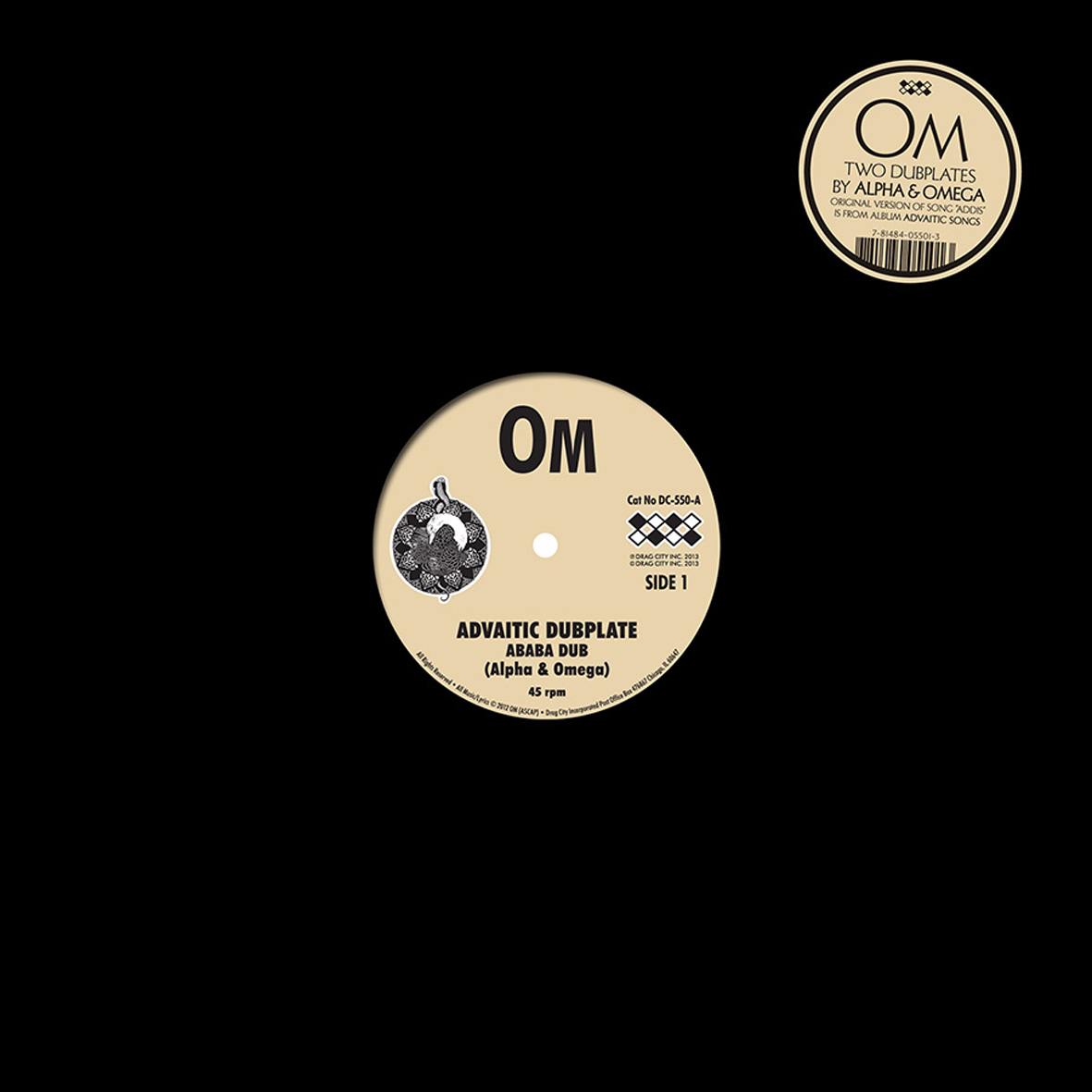 This single is a particularly divergent release in a career where divergence is rapidly becoming the norm, combining (arguably) the least Om-like song in their entire discography with Al Cisneros' recent fascination with dub reggae.  I expected the result to sound a lot like Al's solo dub debut from last year ("Dismas"), but this is something completely new altogether.  The reason for that is that Cisneros handed over the controls to seasoned British roots duo Alpha & Omega.  The piece is likable in its own way (once I got past reeling from my subverted expectations), but I suspect many Om fans will find that this detour is not for them.
This single is a particularly divergent release in a career where divergence is rapidly becoming the norm, combining (arguably) the least Om-like song in their entire discography with Al Cisneros' recent fascination with dub reggae.  I expected the result to sound a lot like Al's solo dub debut from last year ("Dismas"), but this is something completely new altogether.  The reason for that is that Cisneros handed over the controls to seasoned British roots duo Alpha & Omega.  The piece is likable in its own way (once I got past reeling from my subverted expectations), but I suspect many Om fans will find that this detour is not for them.
The decision to enlist Alpha & Omega was certainly a bold and interesting one, as their influence is unquestionably a bit of a double-edged sword.  For better or worse, it shows that Al is now all-in when it comes to his love of dub reggae, seeking out actual, established reggae collaborators and releasing a real dubplate rather than working with electronic/experimental folks closer to his own scene.  While that could cynically (and hilariously) seem like just another entry crossed-off a stoner bucket list ("Write a concept album entirely about weed?  Check!  Embrace Indian instrumentation?  Check!  Make a real reggae album?  Almost there!"), it is also abundantly clear that Alpha & Omega are objectively very skilled at what they do and would be certain to produce something worthwhile (and I bet they probably know a lot of cool studio secrets that Al does not at this early stage of his dub phase).
Two things about "Ababa Dub" and its nearly indistinguishable flip-side immediately wrong-footed me though.  Firstly, Advaitic Songs' "Addis" sounded closer to Dead Can Dance than Om in its first incarnation and now its link to Om's sound is even more tenuous: the remix retains Kate Ramsey's vocals, the tabla, and the descending cello motif, but Al's bass is replaced and his vocals were never there to begin with.  Secondly, the languorous pulse of the original "Addis" seemed like the ideal raw material for smokey, sensuous dub heaven, but Alpha & Omega opted instead to speed-up the tempo to transform the piece into something unexpectedly tense, insistent, and tough.  I expected "sexy" or "hypnotic," but instead I got something that sounds like it should have someone toasting about revolution over the top of it.
Of course, an unexpected artistic decision is not the same as a bad one: Alpha & Omega did not make the record I wanted, but they did a fine job making the record they wanted.  While the two remixes are a bit faster than is probably ideal, the duo otherwise deliver just about everything I would want from a dub single: spectrally dissipating vocals, artfully accented percussion, hazy textures, great use of space, and...uh...something that sounds like a car alarm.  There is certainly some deeper common ground between Om and this dubplate to be found, as the two aesthetics share a devotion to both bass and repetition, but Addis Dubplate ultimately feels a lot more like a likable dub piece that happens to contain some Om samples than a fresh twist on Om's sound.  Which, of course, is perfectly fine, but different....possibly even unique, as Drag City's next two Cisneros platters tread a bit closer to expected territory.
 
Read More
- Administrator
- Albums and Singles
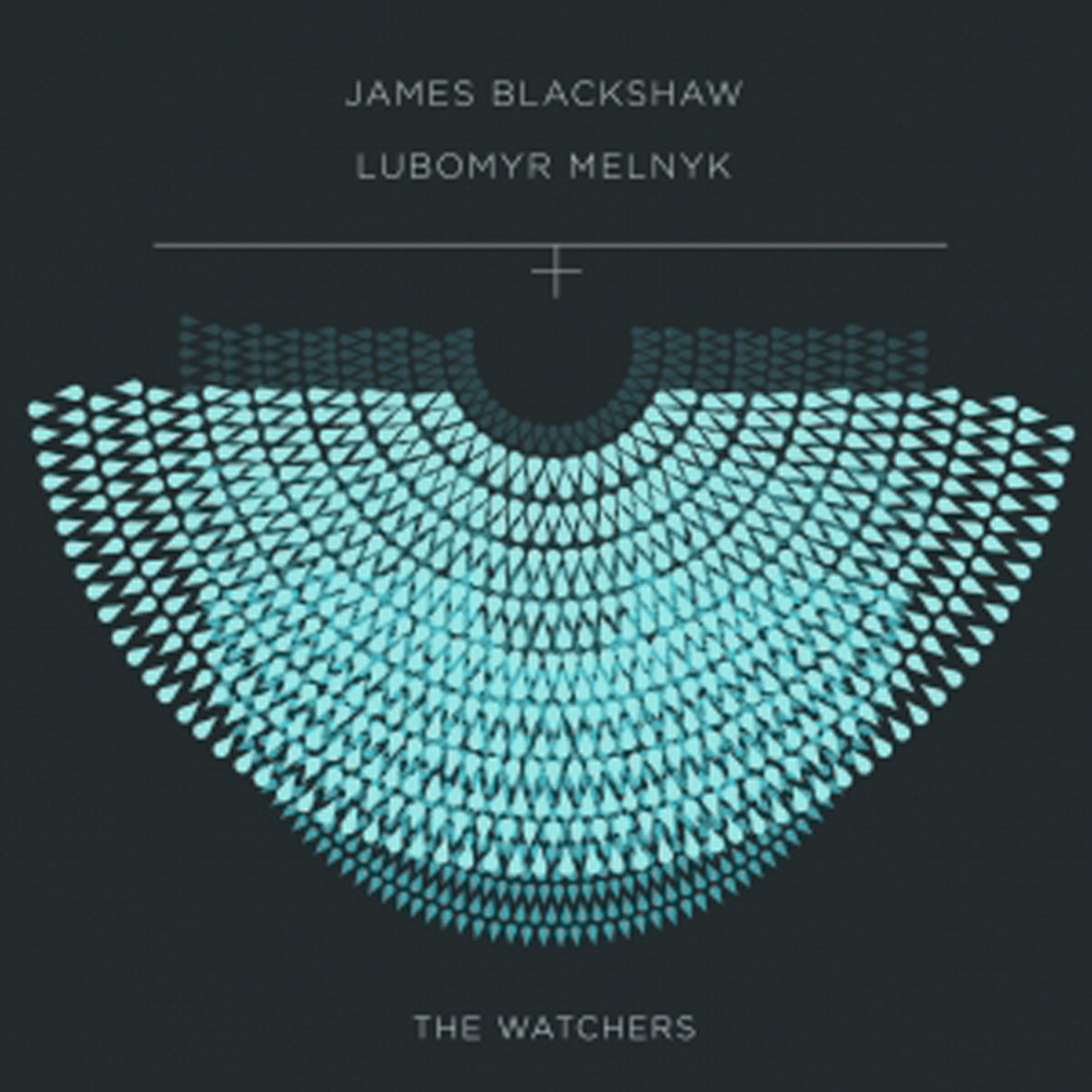 In a very real sense, The Watchers is an endearing improbable album that captures a magical and ephemeral union between two like-minded virtuosos playing together for the first time.  The catch, unfortunately, is that the magic was something of a closed-loop: while the two musicians flowed together as seamlessly and intuitively as old friends, the end product basically sounds like a rough sketch for an unfinished James Blackshaw album (albeit one where Blackshaw himself is often perversely relegated to the background).
In a very real sense, The Watchers is an endearing improbable album that captures a magical and ephemeral union between two like-minded virtuosos playing together for the first time.  The catch, unfortunately, is that the magic was something of a closed-loop: while the two musicians flowed together as seamlessly and intuitively as old friends, the end product basically sounds like a rough sketch for an unfinished James Blackshaw album (albeit one where Blackshaw himself is often perversely relegated to the background).
This is my first exposure to Melnyk's work, which surprises me, as he is quite a noteworthy fellow.  For one, he is the fastest piano player on the planet, a claim bolstered by the fact that he actually holds two world records for it.  More significantly, however, he has forged his own unique strand of minimalism that he calls "continuous music."  Rather than using his prodigious speed for blinding multi-octave runs, Lubomyr unleashes a vibrantly rippling sea of arpeggios and patterns that leaves a fog of overtones in its wake. A greatly modified version of that approach can be found in much of Blackshaw's recent work as well, which is no surprise, as Melnyk has been one of his influences for a while.
In fact, the two originally met when James bought some albums from Lubomyr at an Estonian music festival back in 2008.  While they immediately hit it off, it took almost four years for both of them to wind up anywhere near each other again, which occurred when Melnyk played his first London show in 2012.  He and Blackshaw convened the following day at the Vortex Jazz Cafe and improvised these four pieces over the course of six hours, allowing themselves a maximum of two takes for each one.
While neither musician is known for their improv skills, both seemed to handle the challenge ably, as they are clearly on the same wavelength from the first note.  Unfortunately, The Watchers is hamstrung by some issues that are far more fundamental.  For one, the man behind the idea of continuous music unsurprisingly plays continuously.  Secondly, pianos are significantly louder and more resonant than acoustic guitars.  That combination makes for a very strange outcome, as all four pieces (named after the Royal stars) sound very much like James Blackshaw pieces with very "James Blackshaw" chord progressions, but the intricacies of what Blackshaw is actually playing on his 12-string are sometimes very hard for human ears to hear (particularly when Lubomyr starts to open up).  Yet somehow James still seems to be the one leading, as Lubomyr's clearer and more melodic arpeggios seem to change with Blackshaw's tremelo-picked coloration.
Another problem is that of dynamics, as both musicians are playing continuously, which makes the entire album blur together a bit.  On some occasions, such as near the end of "Venant," Blackshaw finds the space to contribute an actual melody, but it is usually only his furiously tremelo-picked single notes and chords that are able to break through Melnyk's rippling cascade and its lingering haze of overtones. That is not necessarily a failure, but it is a bit unsatisfying, as it basically sounds like an incredibly dexterous classical pianist playing the chord progressions to a James Blackshaw album in an extremely maximalist minimalist way while James provides subtle color and texture through an uncomfortably enormous expenditure of energy.
For a one-time improv set from non-improv guys, I suppose that is not too shabby, but the beautiful transitions, melodies, and complexities that elevate Blackshaw's recorded work into something great are simply not present here.  Of course, Melnyk's aesthetic is diluted as well, but that is not quite as striking, as The Watchers does not sound at all like a Lubomyr Melnyk album.  Hopefully, James and Lubomyr will someday find time to actually compose and record in a studio together, as it seems a bit tragic that the sole documentation of their promising union is a spontaneous performance outside of either man's true area of expertise.
 
Read More
- Administrator
- Albums and Singles
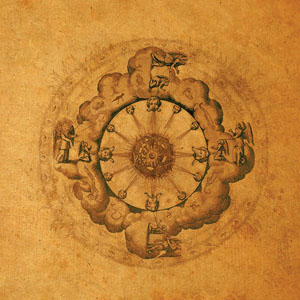 As half of the black metal influenced duo Menace Ruine, Geneviève Beaulieu gives the project its unique sound via her distinct, idiosyncratic voice that alternates between dramatic and understated. On the debut of her side project Preterite (with multi instrumentalist James Hamilton), the metal is scaled back and the more folk elements are pushed forward, but in a way that defies expectations based on that simple description.
As half of the black metal influenced duo Menace Ruine, Geneviève Beaulieu gives the project its unique sound via her distinct, idiosyncratic voice that alternates between dramatic and understated. On the debut of her side project Preterite (with multi instrumentalist James Hamilton), the metal is scaled back and the more folk elements are pushed forward, but in a way that defies expectations based on that simple description.
In many circumstances, the combination of buzzing, accordion like tones and female vocals in a context such as this either does nothing for me or completely turns me away. Here, however, there is a distinct edge to this that makes it stand out, such as the more abrasive sounds underscored with tasteful strings on "Oath," and complimented by Beaulieu's powerful voice.There is a distinct medieval, neofolk influenced quality throughout, but sounding entirely unique.
"The Fourth Corner" makes use of those same pieces, but rearranges it into a more restrained sound, with the strings creating a warm, pleasant drone.The vocals are more restrained overall, which adds to the overall sense of the song.The complex mulitracking of voice and dissonant, ugly sounds at the end make for a drastic, but appreciated change.
The three remaining pieces drift more towards a sound that resembles Menace Ruine, integrating more electric guitar without ever crossing that threshold into metal.The drumless expanse and stop/start moments of "Trial of Strength" offset the effected guitar and the booming, sustained vocals definitely add a distinct color.The lengthy "Viriditas" is similar, with Beaulieu's dynamic vocals shifting from a declaration to a roar multiple times, ending the song (and album) in the grasps of a wall of dissonant noise, with the only identifiable sound being a pounding low-register piano amidst cavernous reverb.
Menace Ruine is not a project that has been bogged down with genre conventions by any means, but I do appreciate Preterite's pushing of some of those elements into different, more abstract fields.The more folk infused pieces balance out the more guitar laden ones, meaning that neither sound dominates the album, nor do any of the pieces feel unfinished or fragmented as a failed experiment would be.It instead makes for a related, but distinct, but thematically connected side project.
samples:
 
Read More
- Administrator
- Albums and Singles
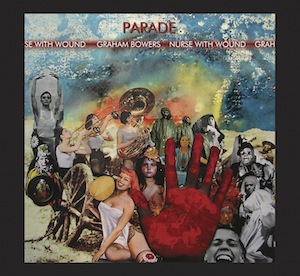 The follow-up to last year's Rupture sees Steven Stapleton and Graham Bowers exploring the inner reaches of the psyche. Parade is due for release soon on the interdisciplinary arts group/record label Red Wharf.
The follow-up to last year's Rupture sees Steven Stapleton and Graham Bowers exploring the inner reaches of the psyche. Parade is due for release soon on the interdisciplinary arts group/record label Red Wharf.
Parade: The second studio album release by Nurse With Wound and Graham Bowers delves into the multiple manifestations of the human form and psyche. The music is an audio sketch-pad, capturing a Commedia dell’Arte type procession of the extremes and banalities of what we are, and what we do, on this bizarre and indefinable one-way trip to oblivion.
A continuous and thematic piece of music divided into eight tracks:
OFF TO HELL ON A HANDCART
APES AND PEACOCKS
THE BELLS OF HELL GO TING A’LING A’LING
RING A’RING O’ROSES
A TISSUE OF DECEIT
RATS, CATS AND DOGS
BEYOND THE PALISADE
THE BITTER END
The CD features original artworks by Babs Santini and Graham Bowers, and a special double vinyl limited edition album is scheduled for release in the Autumn.
Sound samples are available on the Red Wharf website.
Read More
- Administrator
- Albums and Singles
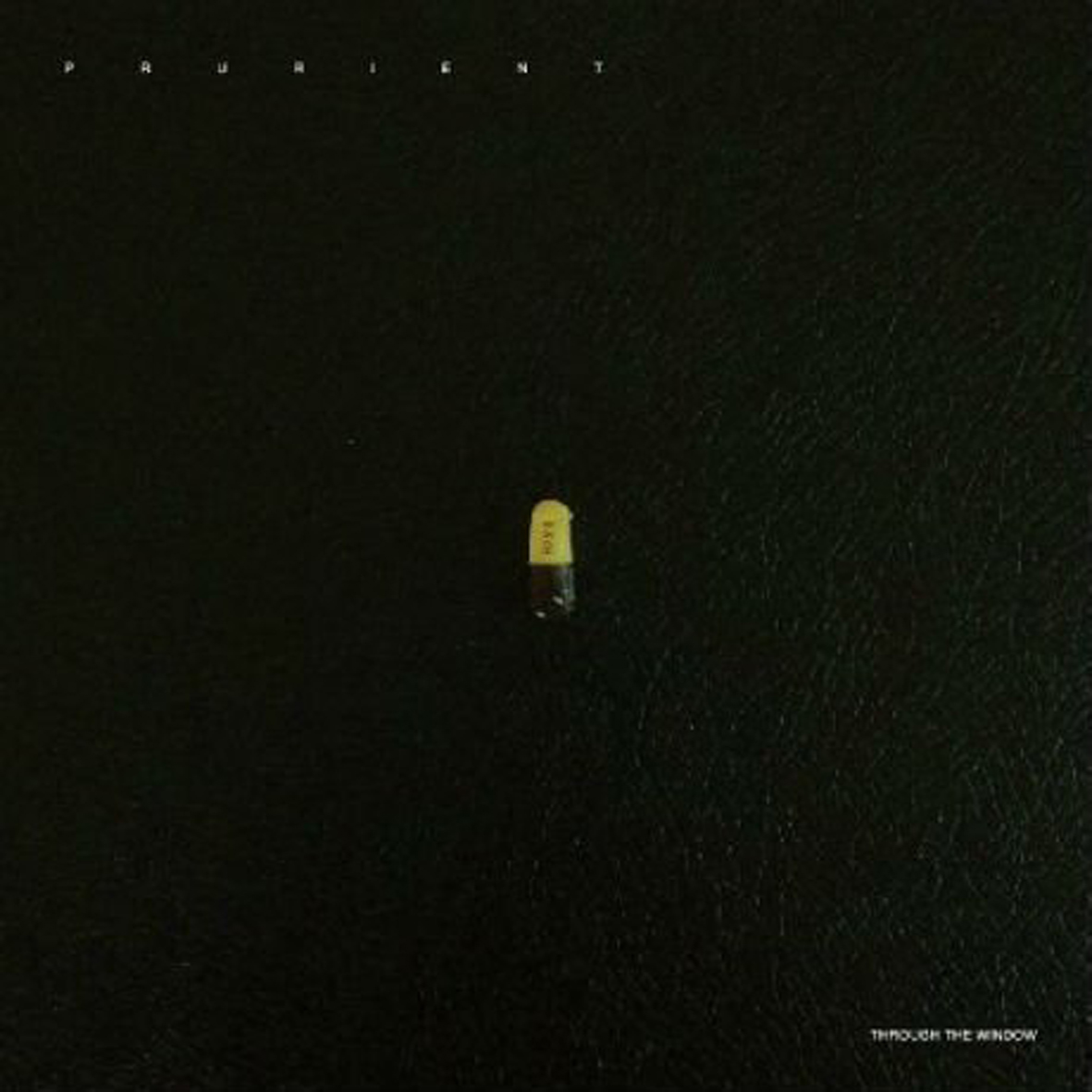 I think it is finally safe to say that I do not understand Dominick Fernow at all, as I am completely mystified as to: 1.) why this was released as a Prurient album, and 2.) how it somehow managed to avoid release for two long years (given Fernow's singularly relentless release schedule). Although it was recorded at the same time as 2011's  excellent (but polarizing) Bermuda Drain, Through the Window dispenses with noise almost entirely to indulge a somewhat misguided fascination with house techno.  The result is undeniably more accessible than everything else recorded under the Prurient banner, but accessibility is not what I am generally hoping for with Prurient and these songs are significantly less compelling than Fernow's other dance flirtations with Cold Cave and Vatican Shadow.
I think it is finally safe to say that I do not understand Dominick Fernow at all, as I am completely mystified as to: 1.) why this was released as a Prurient album, and 2.) how it somehow managed to avoid release for two long years (given Fernow's singularly relentless release schedule). Although it was recorded at the same time as 2011's  excellent (but polarizing) Bermuda Drain, Through the Window dispenses with noise almost entirely to indulge a somewhat misguided fascination with house techno.  The result is undeniably more accessible than everything else recorded under the Prurient banner, but accessibility is not what I am generally hoping for with Prurient and these songs are significantly less compelling than Fernow's other dance flirtations with Cold Cave and Vatican Shadow.
I am quite curious about why this album languished in the vault for so long, as it seems entirely possible that it was delayed because Fernow thought the noise world just was not ready for a release like this.  As amusing as that hypothetical thought-process sounds, it is not actually all that far-fetched, as the much harsher Bermuda Drain already raised quite a few noise-purist hackles when it was released–dropping some house beats back then as Prurient probably would have gotten Dominick absolutely pilloried.  Now, of course, the appropriation of dance beats by noise artists is quite commonplace, so no one really cares all that much.  Unfortunately, the rapid evolution of the form that has occurred in the meantime has also served to render Fernow's forward-thinking experiment somewhat dull by comparison.  Or maybe it is actually fundamentally dull, regardless of context.  I am not sure, as my intense loathing of house beats tends to cloud my objectivity.
The common ground between this and other Prurient releases is minimal and tenuous at best, the strongest link being the inexplicable inclusion of 4-minute interlude of piston-like machine rhythm, hissing white noise, and murky spoken-word ("Terracotta Spine") between the album's more dance-oriented bookmarks.  Otherwise, the only real relation to the Prurient of yore is that Fernow occasionally adds some whispered spoken vocals to his coldly alienating, one-man dance party.  The overarching problem is not with the aesthetic though–it is with the execution.
The two substantial pieces that essentially make up the entire album seem to be striving for a shadowy, propulsive "midnight drive" kind of feel, which is just fine by me.  Unfortunately, Fernow's cold, pristine, and ultra-minimal vision badly overreaches the somewhat pedestrian and predictable motifs his songs are built upon.  Both "Through the Window" and "You Show Great Spirit" are essentially just simple minor key synth riffs that are endlessly repeated with a thumping beat for 10 or 20 minutes.  Admittedly, both are quite propulsive, but they are also fairly bombastic and overly repetitive.
It will not surprise me at all if this goes on to become Prurient's most popular release to date (albeit one with a very different audience), but it just feels clumsy, dated, and dilettantish to me: Fernow definitely needs to cultivate a lighter touch if he wants to make dance music this straightforward.  The most frustrating part of it all is that I know Fernow is capable of making great beat-driven music.  In fact, I even like how he gradually builds and morphs the insistent kick drum pulse on these songs.  Unfortunately, Dominick's songwriting and melodic talents are lagging too far behind his rhythmic and textural abilities for this stab at dance music to truly catch fire.  There is still a nagging part of me that suspects that I may just not have found the perfect context in which to experience this album yet (barreling down the Autobahn at 4am in a melancholy mood with a dead prostitute in my trunk?), but my tentative assessment is that Through the Window is merely a well-meaning and unexpectedly listenable misfire.
Samples:
Read More
- Administrator
- Albums and Singles
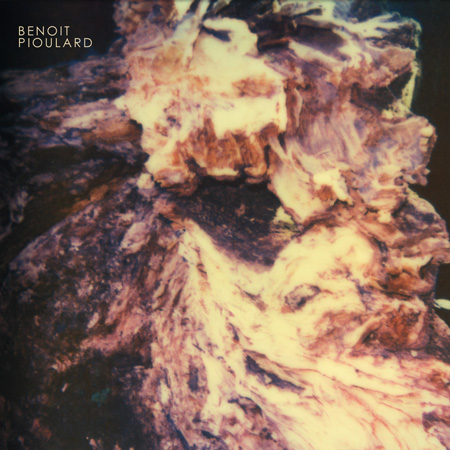 Benoit Pioulard's latest release makes a subdued, melancholy journey through watery pop. Peerless at his best moments, Hymnal is very nearly nothing but, showcasing a keenness for murky left-field songwriting that ought to go nowhere. Yet it all feels very direct and focused, very familial. Thomas Meluch probes discomfort, harmony, and unique production techniques to assemble music which flows naturally even if it takes no easy path to be heard.
Benoit Pioulard's latest release makes a subdued, melancholy journey through watery pop. Peerless at his best moments, Hymnal is very nearly nothing but, showcasing a keenness for murky left-field songwriting that ought to go nowhere. Yet it all feels very direct and focused, very familial. Thomas Meluch probes discomfort, harmony, and unique production techniques to assemble music which flows naturally even if it takes no easy path to be heard.
The last few seconds of "Mercy," the first song on Hymnal, ring out with tape-damaged beauty, heralding a vague but pleasant finale to an album which has just started. This is the way Meluch carves into the first moments of a new release. Hymnal digs deep into a hole and stays there; "Mercy" plays like a breath of air before a long dive, with "Hawkeye" and "Excave" drifting in and out of subsonic echoes and through slow waves of longing. Thomas Meluch captures a space in folk music (in its augmented present form) that almost resembles electronica, where everything is sustained and overt repetition earns more than single gestures.
The difference is this is purely bucolic, and rhythmic but soft, and laced with long drones, many of which serve as intermediaries between the more structured songs. "Gospel" is a gorgeous slow cycle of metallic chords that never aim for sublimity despite the name, etching the short range of notes into stone over five minutes. In excluding the indulgence that such a deep, endless pool of sound should spur him to, Meluch lets the audience fill in those gaps. It's very simple, but very clever, and it plays perfectly to his already well-established preference for muddled obscurity and shrouded purpose. "Litiya" holds on a strange chord in its final moments, an unwelcome oddity that melts into the bleary catharsis of "Knell." Each ambient part follows after poppier songs not as a counterpoint but a complement; it's almost as if Meluch's contemplation begs to be intoned vocally and instrumentally as well.
After releasing a number of sparse drone pieces back in 2011, it's not hard to see Hymnal as a way of capitalizing on those stems, treating them as a base inspiration for some further sound experiments. In this case, Hymnal is a plunge into the ocean, a demonstration of how tranquility can lead to ennui, or passion for something unknown. Drone and folk intertwine in mellifluous, unique ways, but never stagnate, because Hymnal shows that not using space is not necessarily wasting it.
samples:
 
Read More
- Administrator
- Albums and Singles
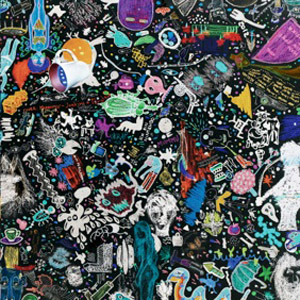 On this dense little 7" from the Norwegian quintet of guitar, bass, drums, synth and tuba, one half of the improvisations make for a slow burning pandemonium, while the other removes all barriers and just freaks out, with both songs excelling in their attempts. It is sloppy, noisy, and insane, which is the best possible outcome for this sort of work.
On this dense little 7" from the Norwegian quintet of guitar, bass, drums, synth and tuba, one half of the improvisations make for a slow burning pandemonium, while the other removes all barriers and just freaks out, with both songs excelling in their attempts. It is sloppy, noisy, and insane, which is the best possible outcome for this sort of work.
"Feda Bru" is all sludgy creeping chaos, making for a mess of sound that is hard to distinguish parts from one another.Besides the wobbling synth noise that opens the piece, everything else becomes a mass of slowly surging noise that simmers more than anything.It is messy, but in a lurching, controlled fashion, with a passage of deliciously clumsy bass guitar to close things out.
What was held at bay on the A side comes completely apart on "Logatunellen."Right from the outset; a drum passage that sounds like a kit being rolled down a long staircase, eventually stabilizing itself and forming some beautifully deranged sloppy garage rock sound.Drums clatter away, guitars feedback more often than they play actual notes, and the synth, bass and tuba merge together into some unholy roar.In the closing moments the rhythm section locks into a repetitive, but pounding groove while the guitar squalls above, with each layer slowly peeled away until the conclusion.
From the sound to the weird, absurdist artwork, it is obvious that Mummu are going for balls out unhinged improvisation, and their attempt is more than successful.For all its messiness, however, there is enough underlying focus and structure to give these two pieces a definite song-like quality, and not just random instrumental jerking off.Getting that structured disorder is no easy feat, and this band does it exceptionally well.
Read More
- Administrator
- Albums and Singles
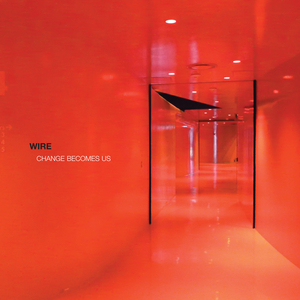 Nostalgia, and catering to it, can be a dangerous thing. There are of course exceptions, such as the recent Swans tours and albums and Wire's own reappearance in the early part of the 2000s, but too often it is fraught with artists clinging shamefully to old glories with little artistic merit. Which is one of the things that makes this ostensibly new Wire album somewhat hard to peg down. Building upon material that was previously performed live, but overall unfinished from the post-154, pre-first breakup era, Change Becomes Us builds itself upon these and puts a Bruce Gilbert-less sheen to everything, with mixed results.
Nostalgia, and catering to it, can be a dangerous thing. There are of course exceptions, such as the recent Swans tours and albums and Wire's own reappearance in the early part of the 2000s, but too often it is fraught with artists clinging shamefully to old glories with little artistic merit. Which is one of the things that makes this ostensibly new Wire album somewhat hard to peg down. Building upon material that was previously performed live, but overall unfinished from the post-154, pre-first breakup era, Change Becomes Us builds itself upon these and puts a Bruce Gilbert-less sheen to everything, with mixed results.
First, and what I find the most difficult part of this album to swallow is that this is not unheard material:everything on here is based upon reworks of material captured on Document and Eyewitness and its sister compilation, Turns and Strokes.Personally, I have sat with those albums for the better part of a decade and a half, and I know many others have much more experience with them, and thus those unfinished, rough, and poorly recorded versions feel like the "right" ones to me.The idea of revising and polishing them as newer material is somewhat troublesome.
When everything comes together, the results are of the same quality I would expect from Wire:"Doubles and Trebles" tweaks "Ally in Exile" (which also inspired "I Don't Understand") with more complexity and some of the acoustic guitar sound Colin Newman brought on board with Red Barked Tree, but keeps some ugly distortion in as well, retaining the espionage tinged tension of the original.The same goes for "Stealth of a Stork," which works in material from "Witness to the Fact," but keeping that nasty, spiky edge amidst the cleaner studio tweaking.
An example where things fall flat, however, would be "Re-Invent Your Second Wheel," which superficially has a light, floaty sound akin to most of A Bell Is A Cup, complete with some of Graham Lewis' more affected vocals.As a stand alone composition, it would probably be acceptable, but not outstanding.Knowing this is based upon the bizarre neo-tribal Dadaist "Zegk Hoqp" just makes everything seem wrong in comparison.The odd call and response chants and sloppy polyrhythms (which included the members of DAF on Document and Eyewitness as percussionists) are reduced to a light, unobtrusive pop number.
The other troubling facet of this album is that it continues to have such a pop leaning that it starts to blur the lines between a Wire album and a Colin Newman project.Bruce Gilbert always kept things weird (in the best possible way), and as the band continues more and more without his input, this lack of difficulty becomes more pronounced."Keep Exhaling" (originally "Relationship") could be culled from a Newman solo work, and "Time Lock Fog" works for what it is, but makes me crave the dissonance of "5/10," from which it was spawned.
That is not to say that this lighter pop feel is always a bad thing, however."B/W Silence" works well as an ethereal influenced piece, based upon the live version of "Lorries" that already had that sensibility to it."Magic Bullet" also, previously heard in an abysmally lo-fi form as "Over My Head" balances the melodic and the ugly quite well.
Something like "Eels Sang" sits in a grey area for me that I am still not entirely sure how I feel about it.The overall feel is faithful and consistent with the live take, but it just feels so different without Lewis' exasperated vocals and the beautifully harsh horn blasts.The same applies to "Love Bends", which as a stand alone song would be quite excellent as a bit of intentionally overblown pop, but the fact that it borrows from the deliriously unhinged "Piano Tuner" leaves things somewhat questionable.
I know how awful it is to end a review without a definitive opinion, but to be honest I simply have not been able to form a specific one for Change Becomes Us, which I suppose is a conclusion unto itself.Had I no familiarity with the nascent, disjointed material this was borne from, I would definitely be fond of it, although I would probably still feel that it is a bit less difficult and challenging than the best Wire albums.But with the fact that it is based on material I have heard so many times over the years, my opinion ends up tainted by feelings of how things "should" sound in their original form.As I said, nostalgia can be a dangerous thing.
samples:
 
Read More

